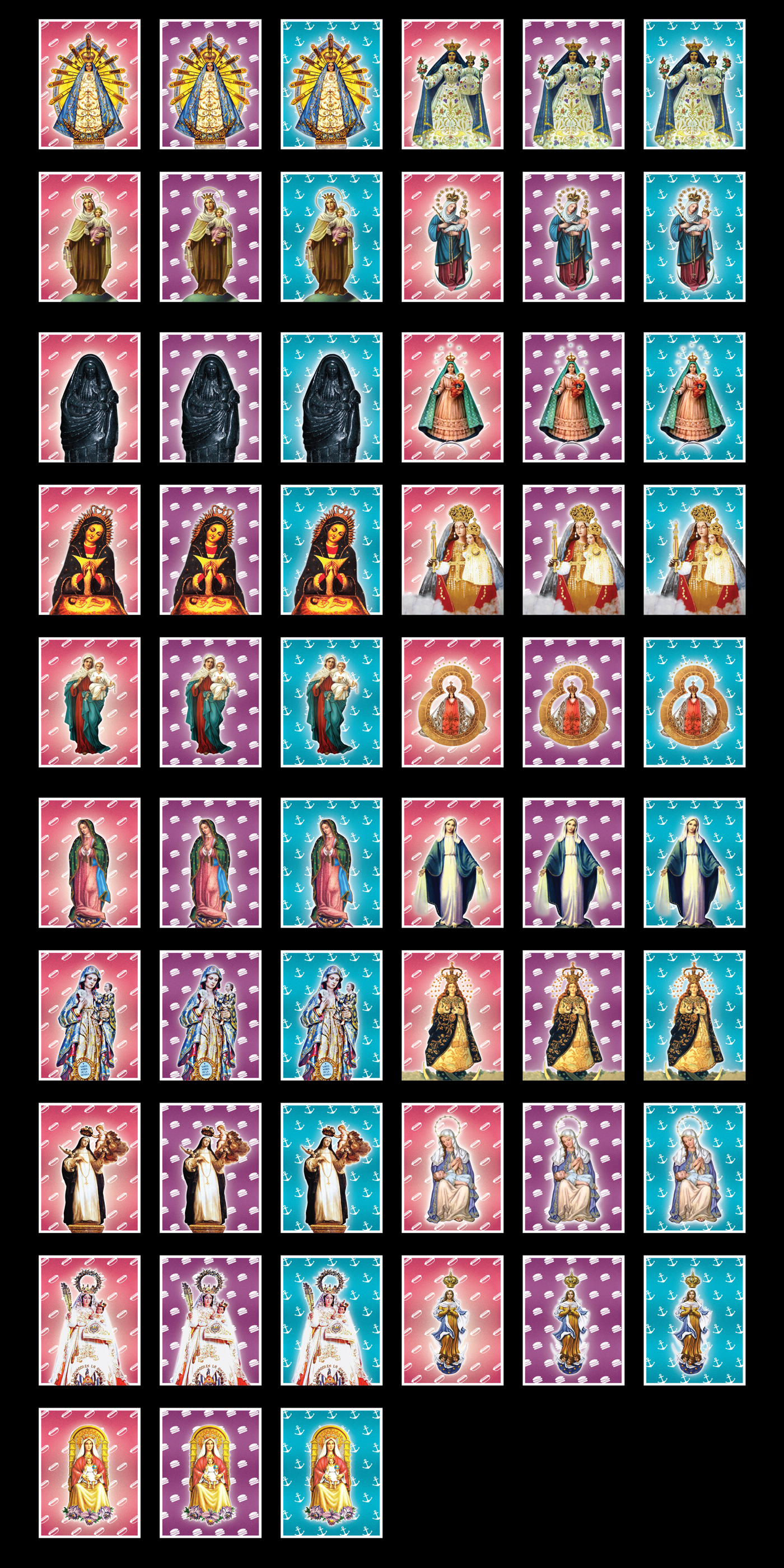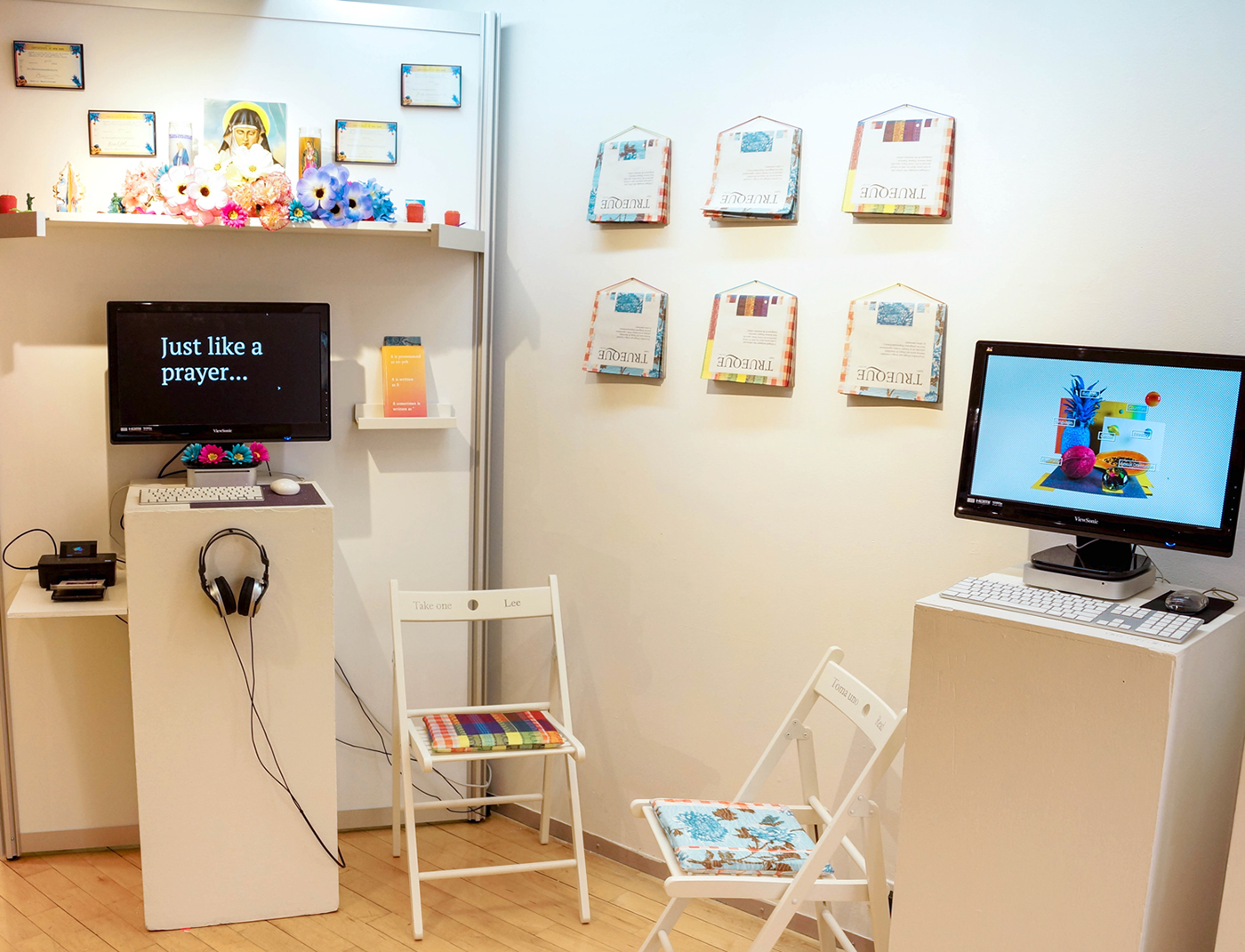
“Cultural objects are embedded in a process of creation and reception such that “cultural creation is itself a form of material production, that the abstract distinction between material and ideal superstructure dissolves in the face of a material social process through which both “material” and “idea” are constantly created and recreated.” - Raymond William and William Roseberry, My Music is My Flag






Catholic iconography can be catalogued as kitsch by non-Catholic people. Additionally, this imagery is popular between Latin Americans in the United States and can be found in a great majority of households. Religious iconography is part of the visual language that Latin American immigrants bring with them when they move to the United States. On the other hand, I have found that in the United Stated most imagery from pop-culture is also catalogued as kitsch.
By extracting the essentials from a collection of Catholic imagery, relatable to Spanish Latin Americans, and combining it with icons associated with the United States pop-culture a new form will emerge. By exploring these combinations in a satirical manner, new questions will also arise. One of the project’s main goals is to incite judgment by criticizing the concept of labeling artifacts and imagery as kitsch.
The final visuals are satirical combinations of imagery from different cultures. First, there are nineteen Virgin invocations representing each one of the Spanish speaking Latin American countries. Secondly, there are three different backgrounds made out of icons, representing the United States’ pop-culture.
The installation consists of a website, a 4x6 photo printer and the song Like a Prayer by Madonna. The user listens to the song while interacting with the website in which he/she needs to make multiple selections. First, the user needs to scroll down while reading the Hail Mary in order to click next and move to the next page. After finishing the Hail Mary, the user will have to click on Amen, which changes to Amén when the mouse hovers over it. In the next section, the user is confronted with nineteen flags corresponding to the Spanish speaking Latin American countries. Once the user chooses one, in the back end of the interaction a Virgin is selected based on the chosen flag. In the next page, the user needs to select between three icons inspired by the United States popular culture: a hot dog, a hamburger and an ice cream. The user has to click on the one that gets his/her attention the most and this will prompt the interaction to provide the last image. The last image is a combination of the last two answers: the flag and the icon selection. (See images below)
Dialogue: Provided that the target audience of the project are Latin American immigrants living in the United States, the dialogue happens between the user and his/her current life circumstances. It is the intention of the project to use popular imagery in order to drive the users towards reflecting on how their identity could be influencing other cultures and vice-versa.
Interaction: By forcing the user to scroll down the page in order to read the Hail Mary, the interaction attempts to resemble how an individual prays. After finishing the prayer, the user needs to click Amen and then select the flag from the country he/she identifies with. Next, the user encounters another page in which he needs to select an icon. The final interaction happens when a personalized Virgin invocation image is printed based on the user’s previous choices. Upon receiving the print, the interaction continues within the user and his/her particular reaction to the final image.
Negotiation: There is little negotiation in the physical interaction because the choices the user can make are already predetermined. The idea is for the user to have an intimate negotiation when the final image pops up. This final image should encourage the user, in a satirical manner, to think about the power but also the flexibility of cultural imagery



